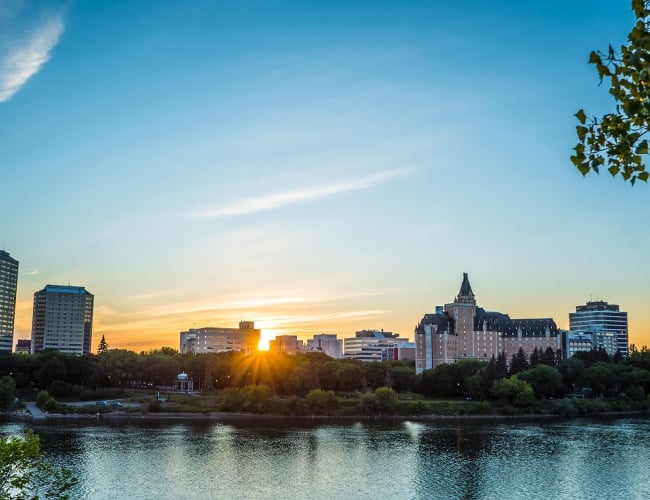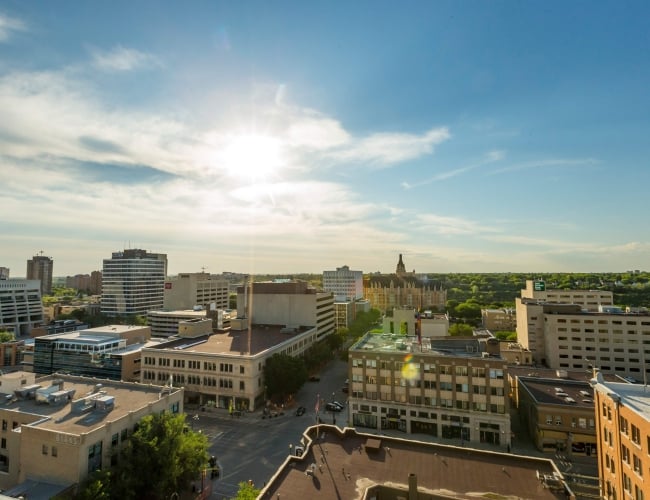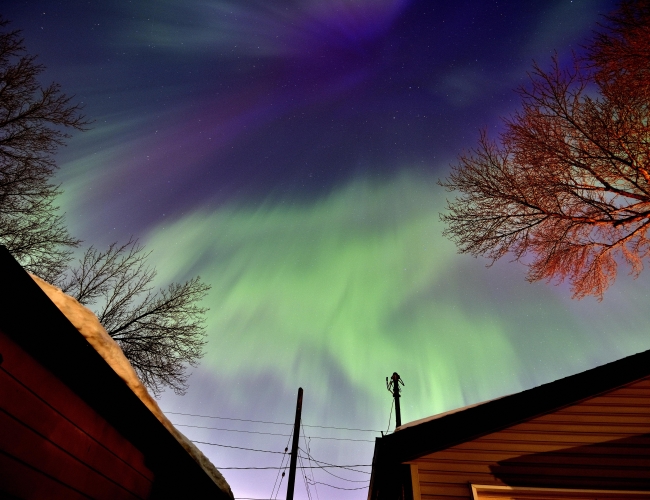
Saskatoonian's Guide to Stargazing & Celestial Encounters
In Saskatoon, you can enjoy watching the night sky come alive. Look up, and you might see constellations and the captivating Aurora Borealis, a beautiful dance of lights. Keep an eye out for a partial moon eclipse, where the moon takes on a unique appearance. And on clear nights, get ready to spot shooting stars streaking across the dark canvas, adding a touch of wonder to the sky. Saskatoon offers a chance to experience these celestial events, making each night a potential encounter with these celestial events.
In this guide, we'll talk about Saskatoon's night skies. We’ll take a look at who are behind Saskatoon’s growing astronomy scene, when’s the best time to see the night skies in the city, and how to prepare for these celestial encounters. We also listed some of the upcoming community-organized events intended for astronomy enthusiasts.
Let’s get started!
Saskatoon’s Astronomy Scene
Behind Saskatoon's vibrant astronomy scene are local organizations and initiatives dedicated to fostering a deep appreciation for the wonders of the night sky. Among these, the Meewasin Authority may be among the biggest contributors. As a non-profit organization committed to conserving the cultural and natural resources of the South Saskatchewan River Valley, they host Dark Sky events providing a unique platform for enthusiasts to gather, share knowledge, and revel in the celestial spectacle.
The Royal Astronomical Society of Canada - Saskatoon Center is another stellar contributor to the city's astronomy community. This local group serves as a meeting ground for astronomy enthusiasts, hosting frequent gatherings at the Sleaford Observatory. The best part? These meet-ups are open to the public, providing an inclusive space for individuals of all levels of interest to engage with the cosmos.
For those eager to explore the skies without venturing too far from Saskatoon, the University of Saskatchewan Observatory offers a convenient way to do just that. Housing a refractor telescope, the university observatory allows individuals to observe the night sky and see celestial wonders.
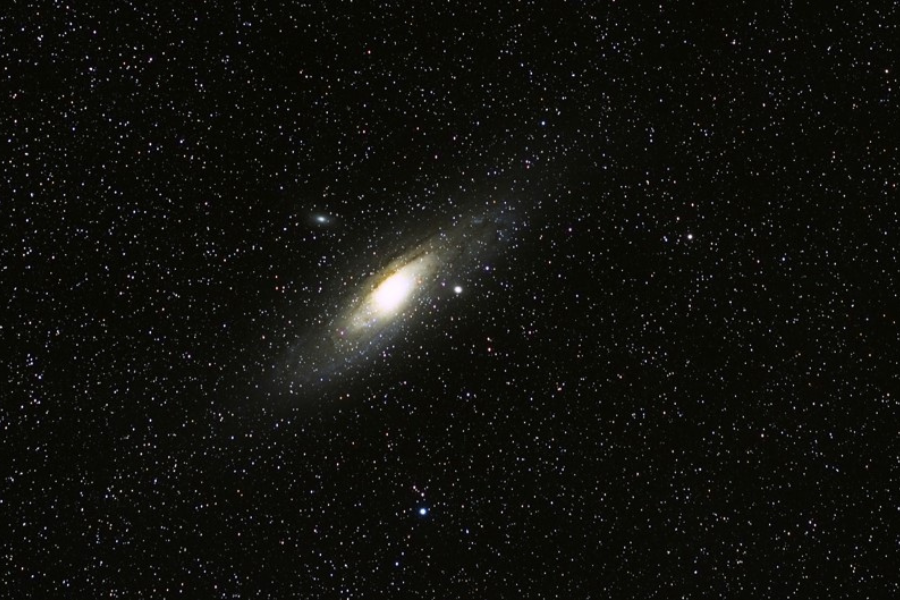
Photo Credit: Tyler Stoddard
Additionally, the observatory features a small museum, providing tours and exhibits during certain months of the year when nights are longer. What's even more fantastic is the free admission during these special months, making astronomy accessible to all.
If budget is not an issue and you’re looking for a place to impress, or maybe even go on a date, Dakota Dunes Resort has stargazing tours for groups and an exclusive package for couples to stargaze and stay at Dakota Dunes. Cozy up to a warm night with traditional bannock, tea, and jam, while admiring the city’s dark skies.
In Saskatoon, the astronomy scene isn't limited to established organizations alone; it also boasts passionate individuals making their mark. Ron Waldron's Living Skies Stargazing is a well-known name in the community, offering star tours and school outreach programs to educate a wider audience about the marvels of astronomy. The enthusiasm doesn't stop there; young enthusiasts like Roman Rabbitskin, a 13-year-old space aficionado, who recently made headlines for recreating the solar system in Saskatoon's neighborhoods. There’s also the Saskatchewan Aurora Hunters Facebook page, which Colin Chatfield started almost a decade ago. Avid aurora hunters would post photos of their aurora sightings to share them with the almost 80,000 members of the group.
These dedicated individuals and organizations collectively contribute to making Saskatoon a dynamic hub for anyone interested in learning more about our night skies.
Best Time to Stargaze in Saskatoon
Timing is key to seeing the full splendor of Saskatoon’s night sky.
In the summer months, the prime window for stargazing opens approximately two hours after sunset. This magical period provides ample darkness for enthusiasts to observe the cosmic panorama above the city.
When it comes to witnessing the dance of the northern lights, the optimal months for aurora sightings in Saskatoon are February through April and September through October. Among these, September and October emerge as the peak months, offering the best opportunity to witness the aurora borealis in its full glory.
The months are best for aurora activity because of the duration of darkness, and prevailing weather conditions. The winter months, with their extended hours of darkness, provide heightened prospects for encountering the northern lights. The long nights create an ideal backdrop for the dance of the auroras, making winter an opportune season for stargazers.
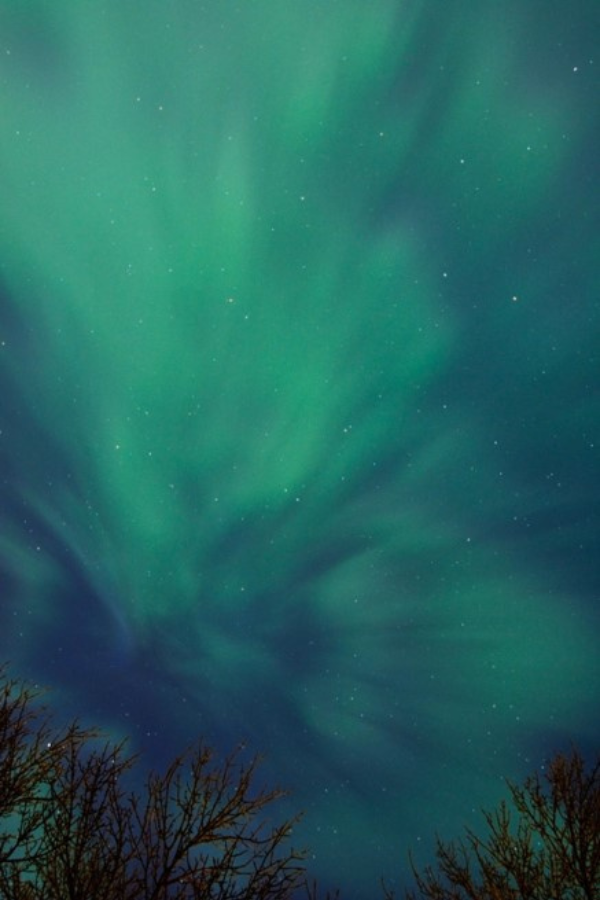
Photo Credit: Tyler Stoddard
Conversely, the summer season, characterized by extended daylight hours, presents fewer opportunities for aurora sightings. However, it's essential to note that stargazing is not entirely elusive during the summer. Even with longer daylight hours, the persistent enthusiast may still catch the auroras and the constellations. While the best time for aurora enthusiasts is in the winter months, the summer nights in Saskatoon are still good for visitors who are only around during the summer days of the city.
Preparing for stargazing or watching the aurora borealis
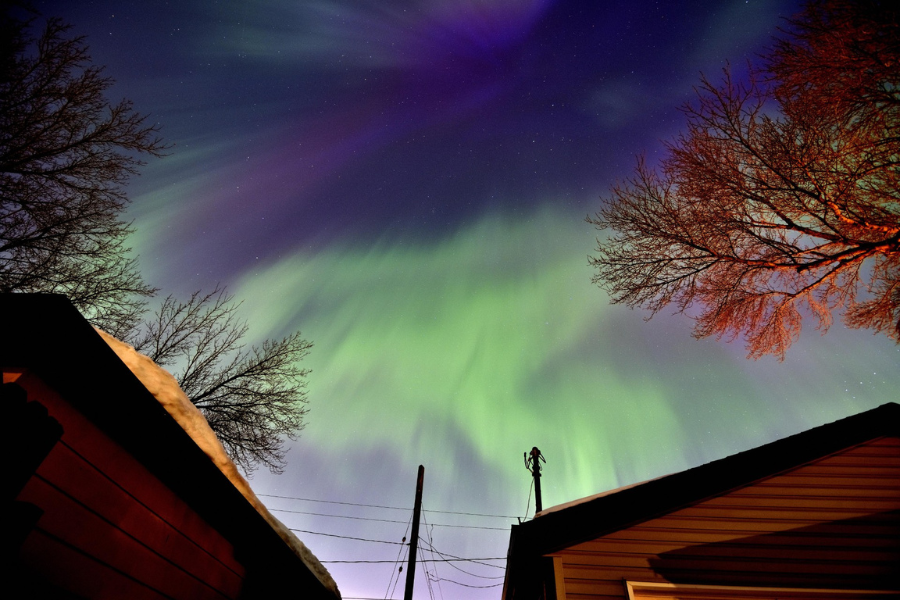
Photo Credit: Tyler Stoddard
Light Pollution
Choose stargazing spots away from city lights to have a clearer view of the night sky. Areas with less light pollution will offer better visibility of stars and celestial objects.
Open Space
Look for locations with open fields or parks that provide unobstructed views of the sky. Avoid areas with tall buildings or trees that may block your view.
Safety
Ensure that the stargazing spot is safe and accessible, especially if you plan to stay late into the night. Consider visiting parks with nighttime facilities or roads with wide shoulders.
Weather Conditions
Check the weather forecast before heading out for stargazing to ensure clear skies and optimal viewing conditions. Cloudy or rainy weather can hinder your stargazing experience.
Gear
Ensure comfort by bringing a headlamp, bug spray, and warm clothing, perhaps even a cozy blanket to make the wait more comfortable.
To also better appreciate the celestial patterns you’ll encounter, consider using printable sky charts or user-friendly apps like StarWalk and Sky Safari, available in app stores. These tools help guide you through constellations and planets visible in Saskatoon's night sky.
If you're interested in a closer look, binoculars work great, and you can even rent them from the YXE Library of Things. However, if you’re looking for a more immersive experience, renting a telescope is an option, and the Royal Astronomical Society of Canada - Saskatoon Center facilitates telescope rentals here.
Top Stargazing Spots in Saskatoon
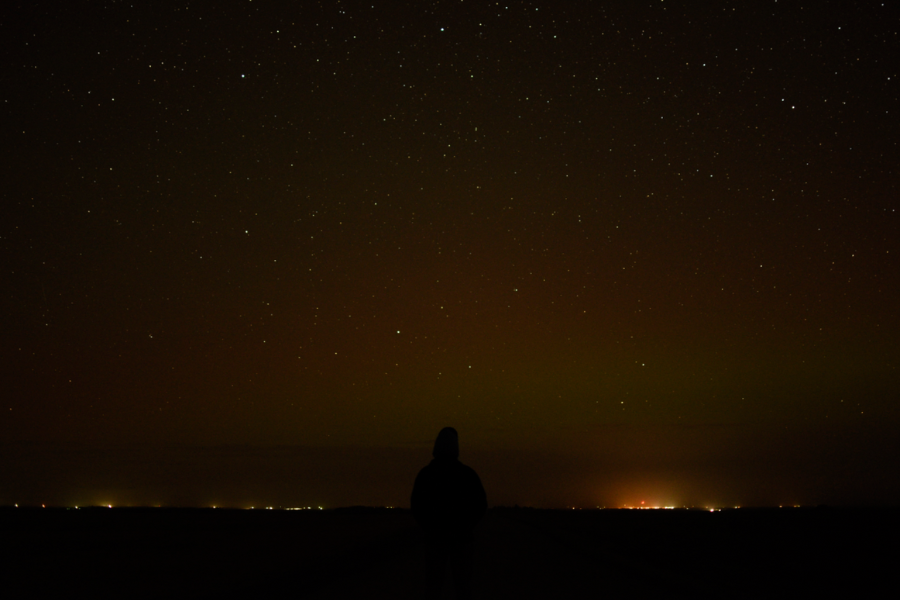
Photo Credit: Tyler Stoddard
Large open areas, parks, and the reflective surface of the river offer ideal locations for observation. The region's low humidity not only enhances the allure of the aurora borealis but also provides favorable conditions for capturing these celestial wonders through photography.
To make it easier for you to find the perfect spot, we've rounded up some exceptional stargazing spots that promise a clear view without venturing too far from the city lights:
Restoring71
Tucked away as a landowner-protected natural area, Restoring71 is primarily a place for both wildlife and nature. The good news? Their doors are also open to those wishing to stargaze and observe the auroras. Make sure to give them a heads-up. You can reach them through their blog or their Facebook page.
Sleaford Observatory
Just a short drive from Saskatoon via Hwy #5 (College Drive), Sleaford Observatory is the headquarters for the RASC, a local group of astronomy enthusiasts. They have a telescope there you can use. To get there, head to Colonsay Road south for 6.6 km, then turn west for 2 km to reach this stargazing hub.
Cranberry Flats
Located approximately 16 km south of Saskatoon on Hwy 219, Cranberry Flats is a quiet conservation area along the South Saskatchewan River. Here, you’ll be far enough from the city to get a peaceful backdrop for night sky observation.
Wanuskewin Heritage Park
This Provincial Heritage Property and UNESCO World Heritage Designation site is a prime spot for Saskatoon's rich history. While Wanuskewin is closed in the evenings, parking along Penner Road still provides an opportunity to enjoy the night sky from this archaeological gem.
Dakota Dunes Resort
Situated south of Saskatoon on Hwy 219, Dakota Dunes Resort & Casino is a nice spot to also enjoy the night skies. Hosting events during the winter solstice, this First Nations casino offers a distinctive setting for stargazing and aurora encounters.
Old Bone Trail Heritage Site
This heritage trail in Corman Park offers a blend of history and stargazing. Once a route for settlers and bison bone merchants, it has become a quiet trail mostly used for day hikes and nature preservations. In the evenings though, it’s a good area to go stargazing.
River Landing
Right in the heart of Saskatoon, River Landing offers a chance to witness the aurora borealis during optimal conditions. Enjoy a unique blend of city lights and celestial wonders when the night sky is at its fullest peak.
Upcoming Stargazing Events and Festivals
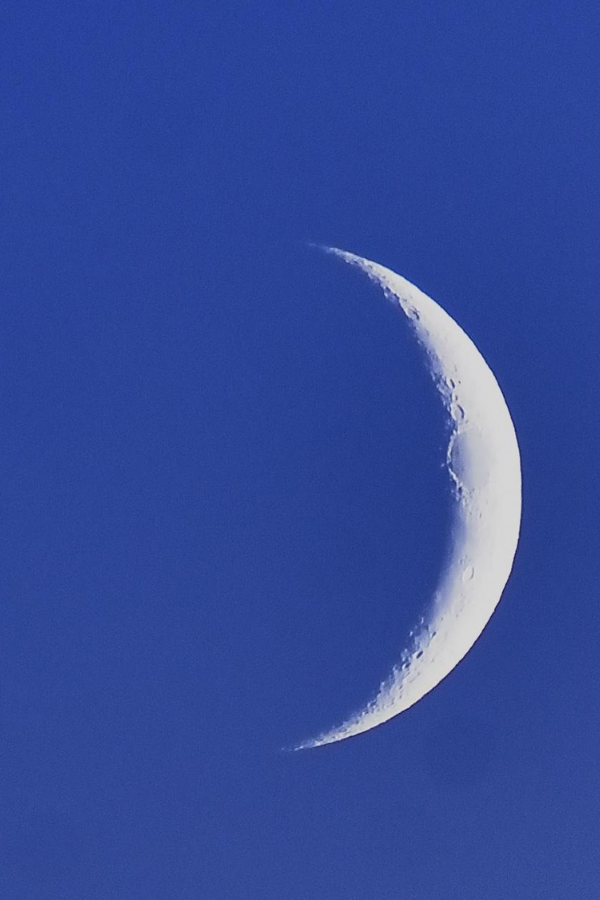
Photo Credit: Tyler Stoddard
Within Saskatoon, celestial enthusiasts can mark their calendars for upcoming stargazing events and festivals hosted by community organizations. On April 8, the city is set to witness a Partial Solar Eclipse, offering a rare opportunity to observe this celestial phenomenon. Simultaneously, Meewasin Valley Authority is also hosting the Dark Sky event at the River Landing Amphitheater to educate Saskatoonians about the celestial event. These events not only bring the community together but also serve as platforms for both seasoned and budding astronomers to engage with the wonders of the universe, making Saskatoon a vibrant hub for celestial celebrations.
Final Thoughts
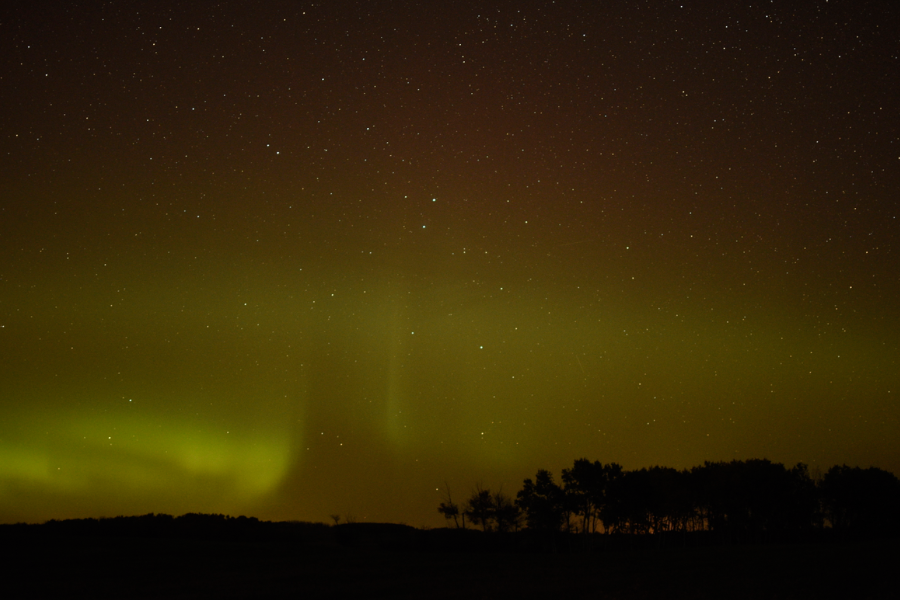
Photo Credit: Tyler Stoddard
Saskatoon stands as an excellent destination for stargazing and experiencing the beautiful dance of the aurora borealis. While the prime latitudes for such celestial displays are typically between 60 and 75 degrees north, Saskatoon's position at around 52 degrees still allows for a remarkable celestial experience. Because of that, it’s not hard for Saskatoonians to get the best views of what the evening skies have to offer. And this guide makes it easier.
We outlined the best community groups to meet other astronomy enthusiasts and the upcoming events to keep an eye on. We also shared the best time to see these celestial encounters and tips on what to bring when planning a stargazing or aurora-watching activity. We’ve also scoped out the best spots in the city to go to get the most optimal views of the night skies.
If you’ve got everything noted down, get your gear ready, and let's explore Saskatoon's night sky!
